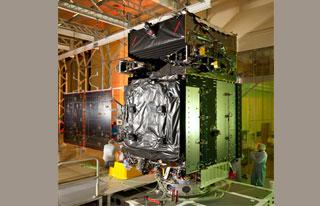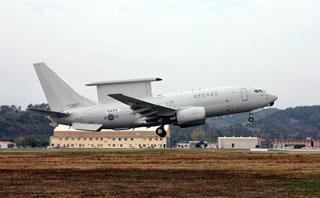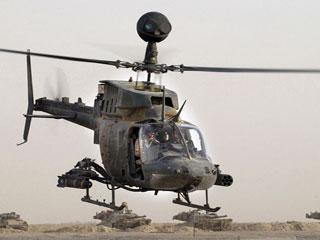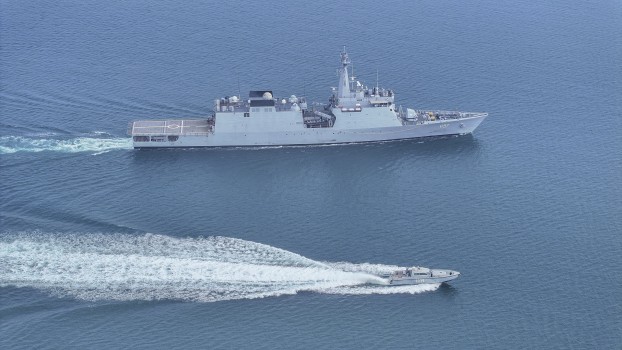
The second Space Based Infrared System (SBIRS) geosynchronous (GEO-2) satellite, shown here extending its solar array, recently completed environmental testing. Photo: Lockheed Martin
SUNNYVALE, CALIFORNIA (BNS): Lockheed Martin has successfully completed thermal vacuum testing of the US Air Force's second Space Based Infrared System (SBIRS) geosynchronous (GEO-2) satellite.
The milestone represents the spacecraft's most significant achievement to-date on the path to launch.
During thermal vacuum testing, SBIRS GEO-2 was thoroughly tested at the extreme hot and cold temperatures it will experience in space to verify its functionality and performance.
"With the completion of environmental testing on GEO-2, the government and industry team is well positioned to deliver this vital spacecraft for launch," Dave Sheridan, Lockheed Martin's SBIRS deputy programme director said in the company statement.
Lockheed Martin will now perform final factory work on the satellite and execute a series of integrated spacecraft and system tests to ensure the vehicle is ready for flight.
GEO-2 will then be delivered to Cape Canaveral Air Force Station where it will undergo final processing and preparation for launch aboard an Atlas V launch vehicle.
 Previous Article
Previous Article Next Article
Next Article










The Indian Air Force, in its flight trials evaluation report submitted before the Defence Ministry l..
view articleAn insight into the Medium Multi-Role Combat Aircraft competition...
view articleSky enthusiasts can now spot the International Space Station (ISS) commanded by Indian-American astr..
view article